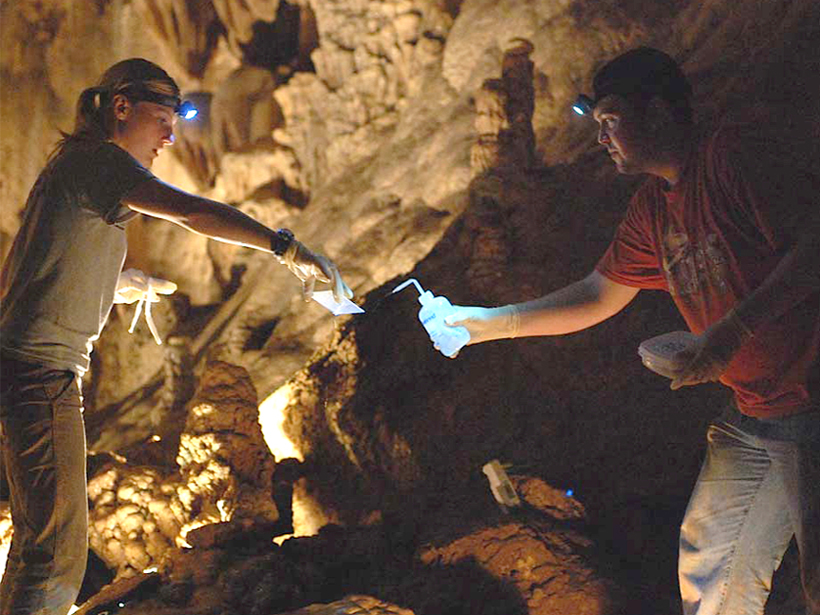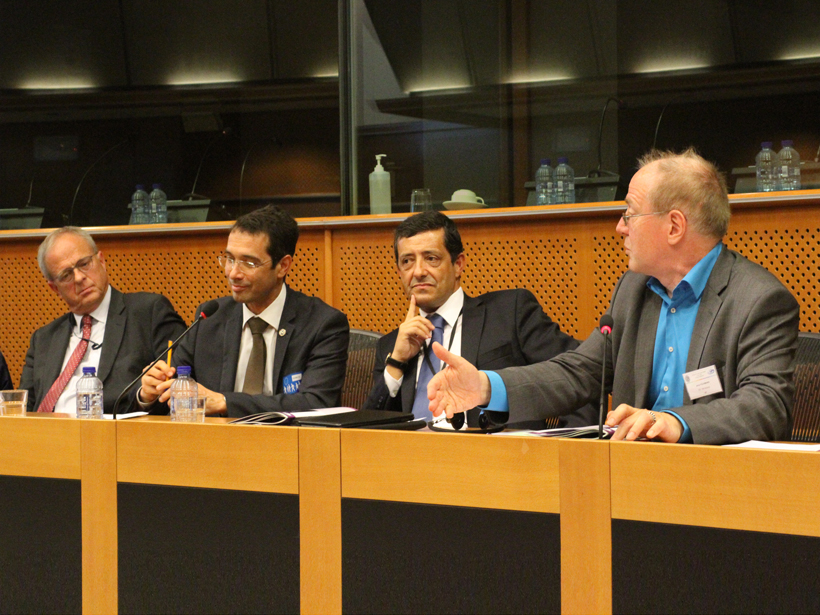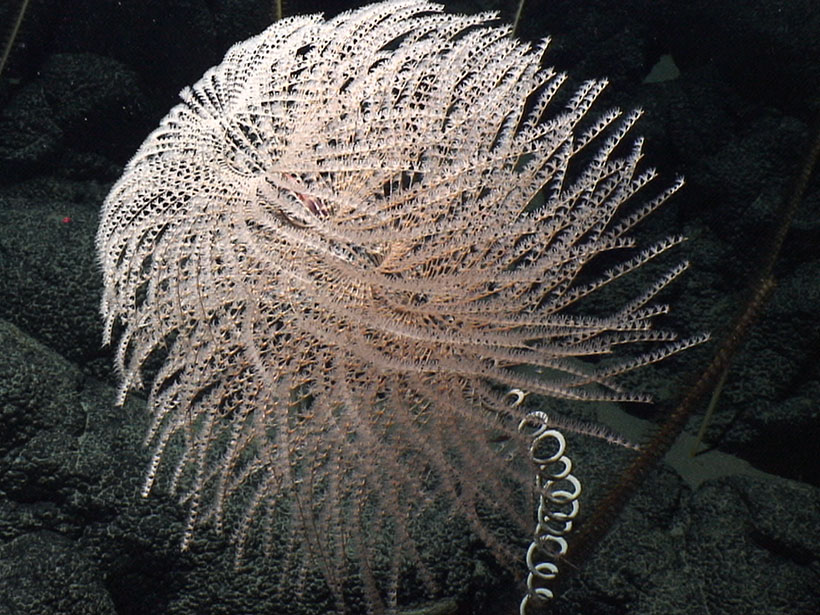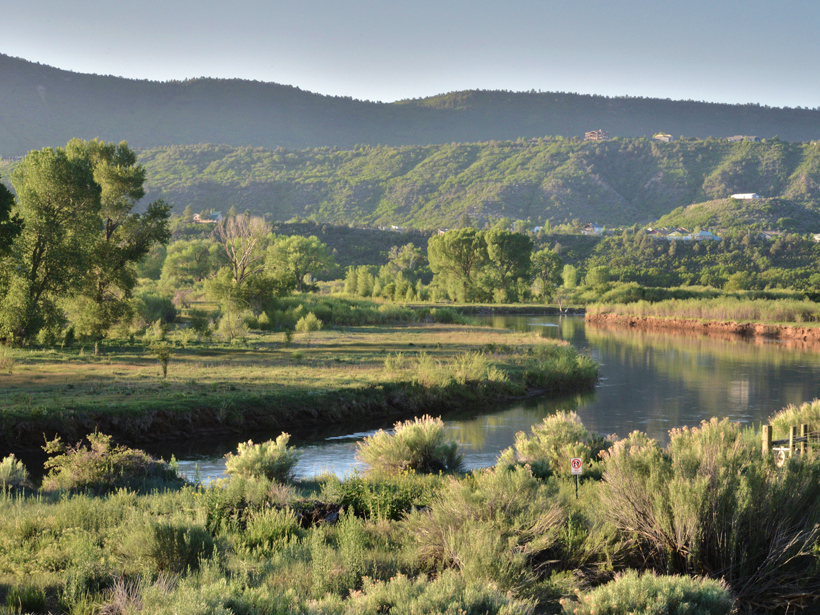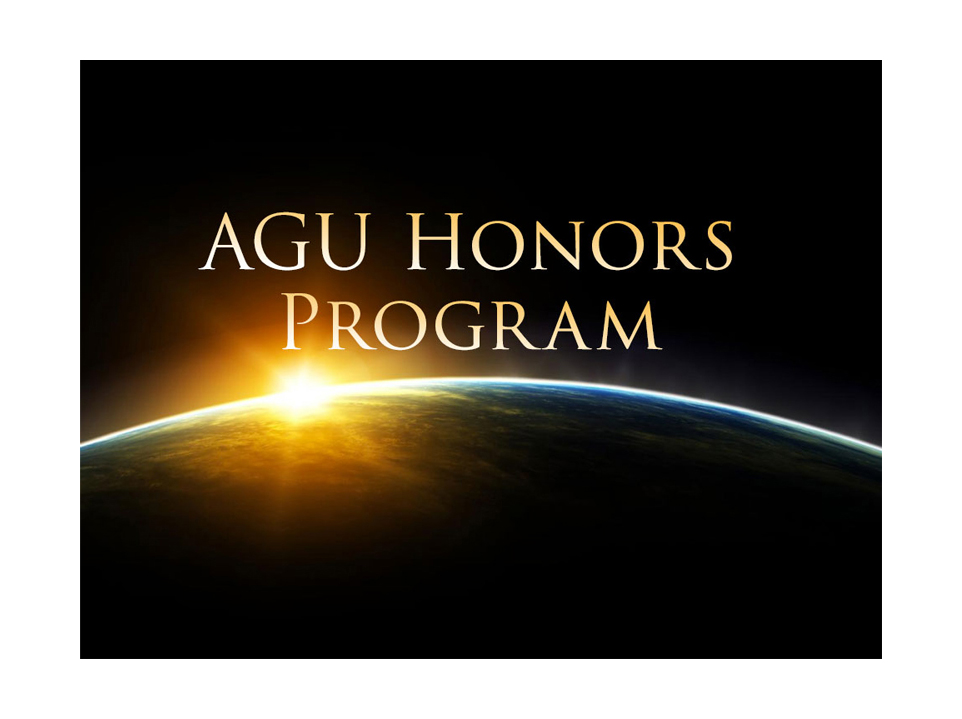The suspected sudden collapse of a nearby volcano's flank may have triggered an enormous wave that carried large boulders high onto Santiago Island in Cape Verde, a new study finds.
geology
Cave "Breathing" Affects Mineral Growth and Climate Clues
A new global model suggests how and where air flow in caves affects the growth of cave mineral deposits that scientists use to reconstruct ancient climates.
Brantut Receives 2015 Mineral and Rock Physics Early Career Award
Nicolas Brantut will receive the 2015 Mineral and Rock Physics Early Career Award at the 2015 American Geophysical Union Fall Meeting, to be held 14–18 December in San Francisco, Calif. The award is for promising young scientists in recognition of outstanding contributions achieved during their Ph.D. research.
Chang and Zhang Receive the 2015 Mineral and Rock Physics Graduate Research Award
Yun-Yuan Chang and Dongzhou Zhang will receive the 2015 Mineral and Rock Physics Graduate Research Award, given annually to one or more promising young scientists for outstanding contributions achieved during their Ph.D. research. Recipients of this award are engaged in experimental and/or theoretical studies of Earth and planetary materials with the purpose of unraveling the physics and chemistry that govern their origin and physical properties.
Pluto Image Shows First Picture of Its Atmosphere
Scientists are amazed by new images that show Pluto's atmosphere and diverse geology.
Report Makes a Case for Geology's Role in Policy Decisions
Scientific societies in the United Kingdom and Europe strive to raise awareness among decision makers about geology's relevance to key societal challenges.
New Insights from Seafloor Mapping of a Hawaiian Marine Monument
New surveys help untangle the complex geologic history of the Hawaiian Archipelago and provide hints about where to seek marine life.
Inflexibility of Some Hydrological Models Limits Accuracy
Reducing the number of fixed assumptions may improve the accuracy of complex process-based models.
"Knobby Terrain" a Sign of Mars's Explosive Past
Newly identified knobby terrain related to ancient volcanoes on Mars hint that pyroclastic ash and rock flowed down slopes early in the red planet's history.
Daniel J. Fornari Receives 2014 Edward A. Flinn III Award
Daniel J. Fornari received the 2014 Edward A. Flinn III Award at the AGU Fall Meeting Honors Ceremony, held on 17 December 2014 in San Francisco, Calif. The award honors “individuals who personify the Union’s motto ‘unselfish cooperation in research’ through their facilitating, coordinating, and implementing activities.”


